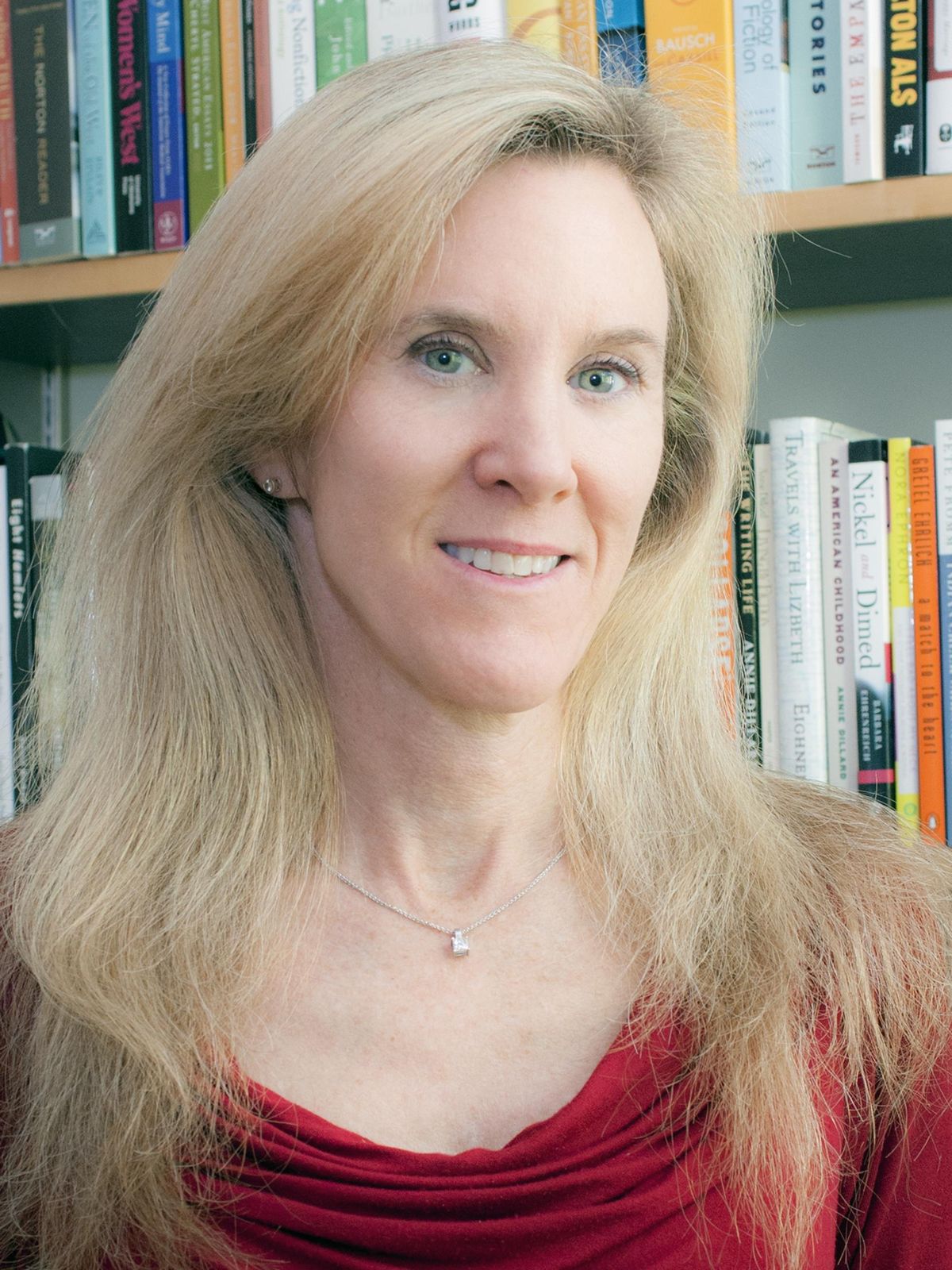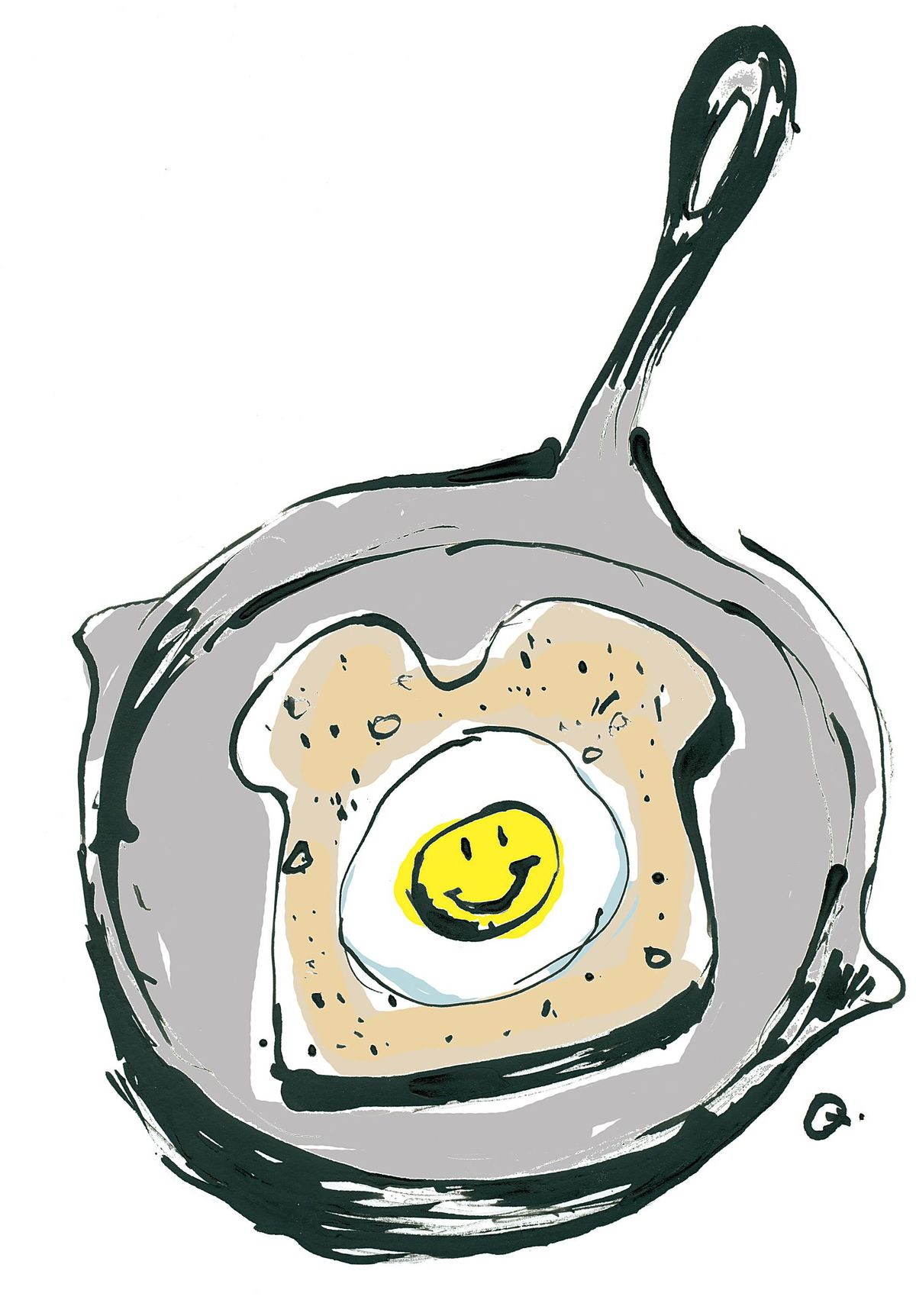Eggs with hats: Our history with certain foods informs a lifetime of emotions
Rachel Toor
You might have learned to call the best breakfast dish in the whole wide world toad in the hole. Or eggs in a basket. Or picture-frame eggs. Or spit in the ocean or spit in the eyes. Or Egyptian sandwiches. Or one-eyed Egyptian, one-eyed Jack, one-eyed sailor, bull’s eye, pirate’s eye, Popeyes. Or cowboy toast or hobo toast or Texas toast. Or gashouse eggs. Egg in the nest or bird’s nest egg. Egg in a hole, hole in one, hole in the wall, holey eggs, or even holy eggs.
You won’t find this dish on restaurant menus. Instead, sneak into a home where toddlers roam, piles of toys act as traps, and where outrageous requests, like “Please don’t put the dog’s foot in your mouth,” are greeted with desperate and angry shrieks.
In the kitchen, a mother aimed at appeasement will know what to do.
She will take a slice of white bread and, square in the middle, use a glass turned upside down to punch out a hole. She’ll pat butter into a hot pan and wait until it sizzles, perhaps hushing the yammering din with a proffered glass of orange juice.
She’ll brown the bread on one side, flip it, and into the hole she will slip the egg. The little round cutout piece will be crisped and flipped as well. At some point, depending on the sophistication of the diners, salt and pepper might be added.
When the dish is done the egg will be cooked to perfection. When you stab the middle with a fork it will bleed a summery sunshiney yellow. The bread will be golden crisp and you will eat it with a child’s smile. You will eat until all that’s left is the round cutout piece, the best part, and with that you will swab the remaining yolk from the plate.
The correct name is eggs with hats.
Your mother may have been misguided or misinformed when she called it by another name. No doubt your mother loved you, but I’m sorry to say, that doesn’t make her right.
My mother made eggs with hats when I was a kid and they felt like a secret, like something she invented just for my brother and me. In my 20s, working in publishing in New York City, I went to a movie theater and watched Olympia Dukakis make eggs with hats for Cher in “Moonstruck.” With crusty Italian bread. And red peppers. Wrong. So wrong.
Around the same time, I brought a boyfriend home with me, a hipster musician who lived in a tenement squat on the lower east side of Manhattan. We rented a car and drove four hours upstate, laughing and singing to the radio, telling each other growing up stories and maybe, because we both always had to be right, arguing a little.
When we got up late the next morning my mother asked what we wanted for breakfast. I had the answer.
“Eggs with hats!” I said, to the confusion of the boyfriend.
While my mother prepared breakfast, the boyfriend and I probably quibbled about what James Joyce meant by the “ineluctable modality of the visible” or competed to see who could remember the most digits of pi. When she set our plates in front of us I flapped my arms with joy.
The boyfriend, tall, rib-skinny, put his head down and shoveled the food into his maw. He agreed they were delicious but didn’t understand the name. “Where’s the hat?”
“This,” I said, brandishing what little was left of my circular cutout, dripping a bit of oozy yolk onto my mother’s table. “This is the hat.”
He shook his head and said, “No. The whole thing is the hat.”
He put the cutout on top of the egg. “See, that’s the brim.” Pointing. Smug. He picked up the circle, jammed it into the egg, and purred approval as he chewed.
I’d never noticed he ate with his mouth open. Or that his nose veered off to the side. Or that he had mean eyebrows. I started thinking about breaking up with him.
Then he leaned over, placed an intimate hand on my thigh, brought his mouth thisclose to my ear, and murmured, “The whole thing is the hat.”
“Mom!” I wailed to the giggling woman who had birthed and raised me.
Decades later, not long after my mother died, I dated a man whose politics were abhorrent to me, whose sense of humor I found juvenile, and whose tidiness seemed an affront. I knew that people often did impulsive things after the death of a parent; I almost bought a house (I do not want ever to own a house) and I dated this man who was not, for me, a good fit.
But on weekend mornings he’d rise early, make coffee, and serve me a plate of my favorite breakfast. They tasted like love.
They’re called eggs with hats.
Rachel Toor is a professor of creative writing at Eastern Washington University. She is the author of one novel and four books of nonfiction, the most recent of which is “Misunderstood: Why the Humble Rat May Be Your Best Pet Ever.” Her column, “Everything is Copy,” will appear monthly in the Monday Today section.

